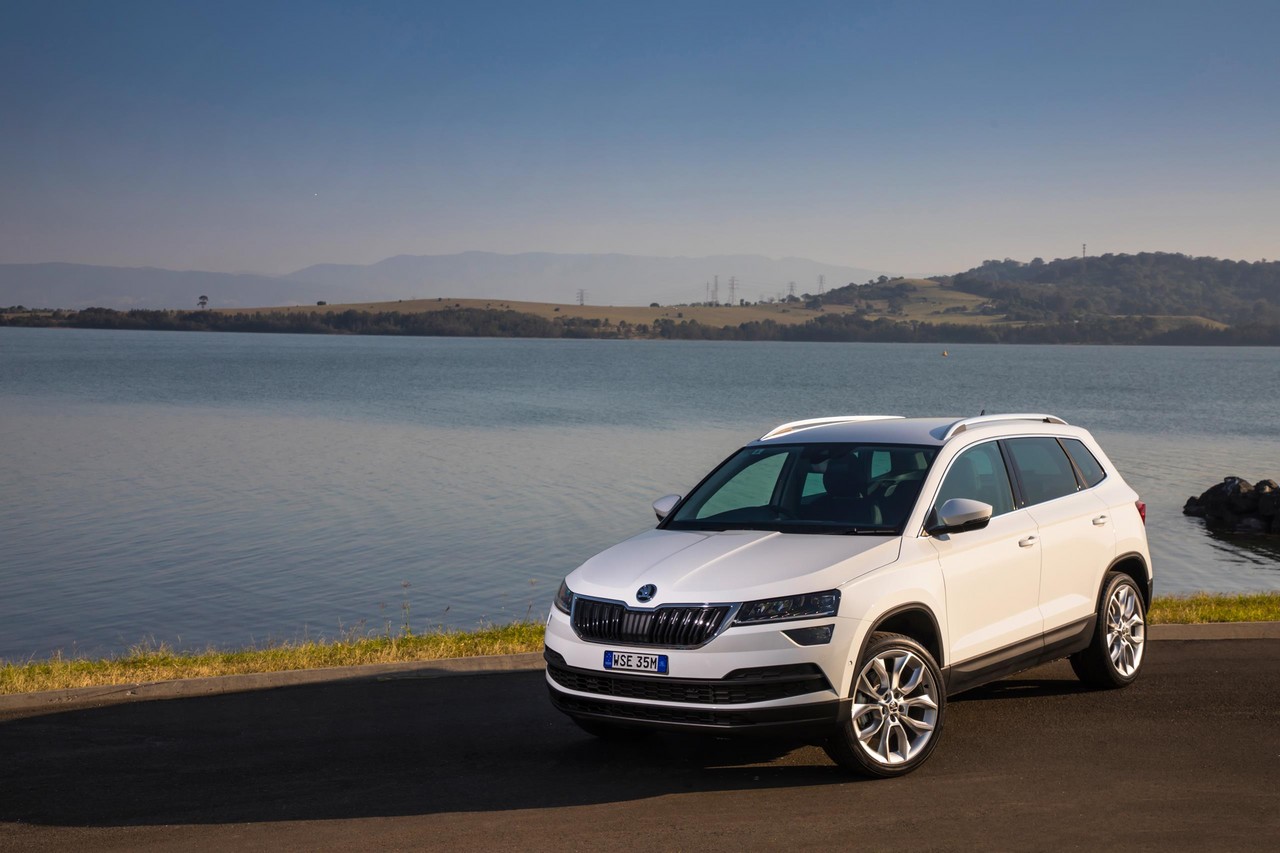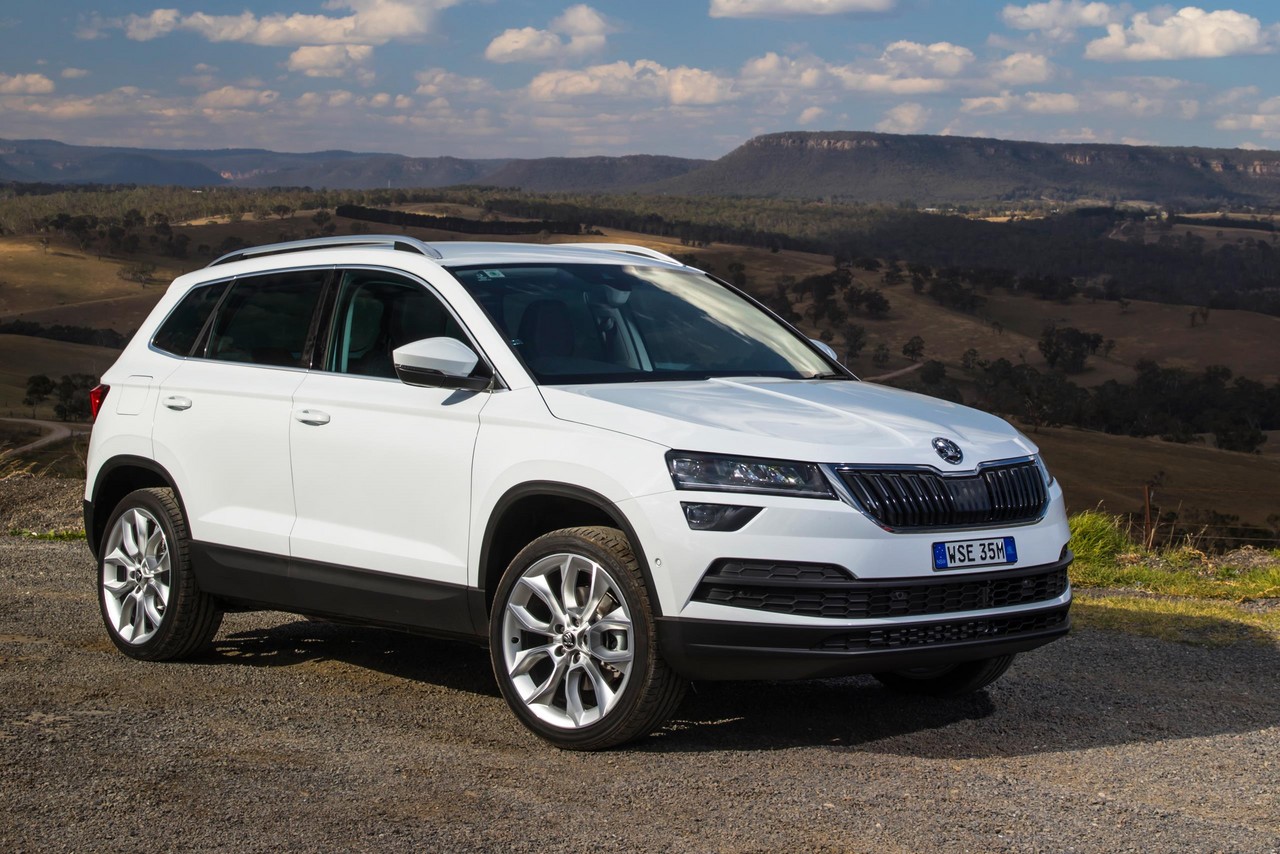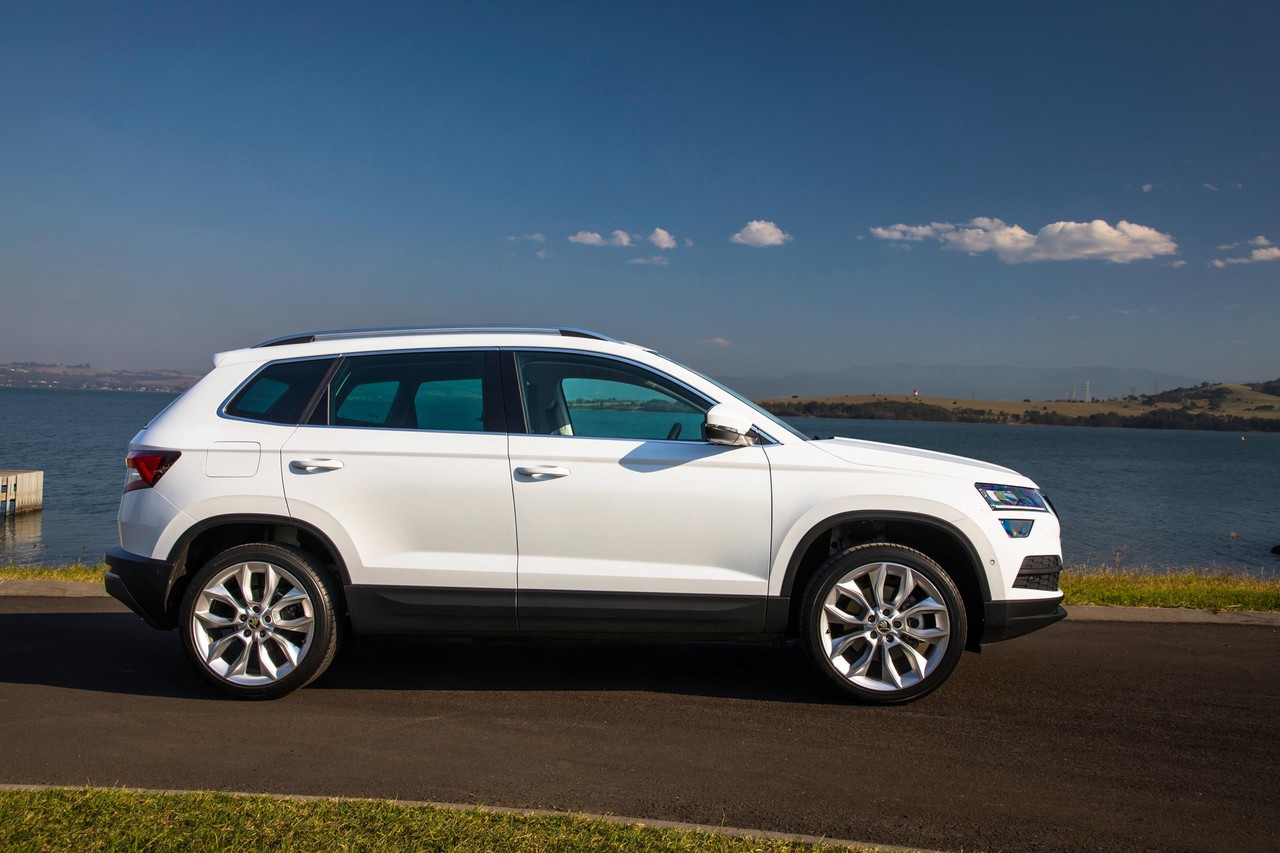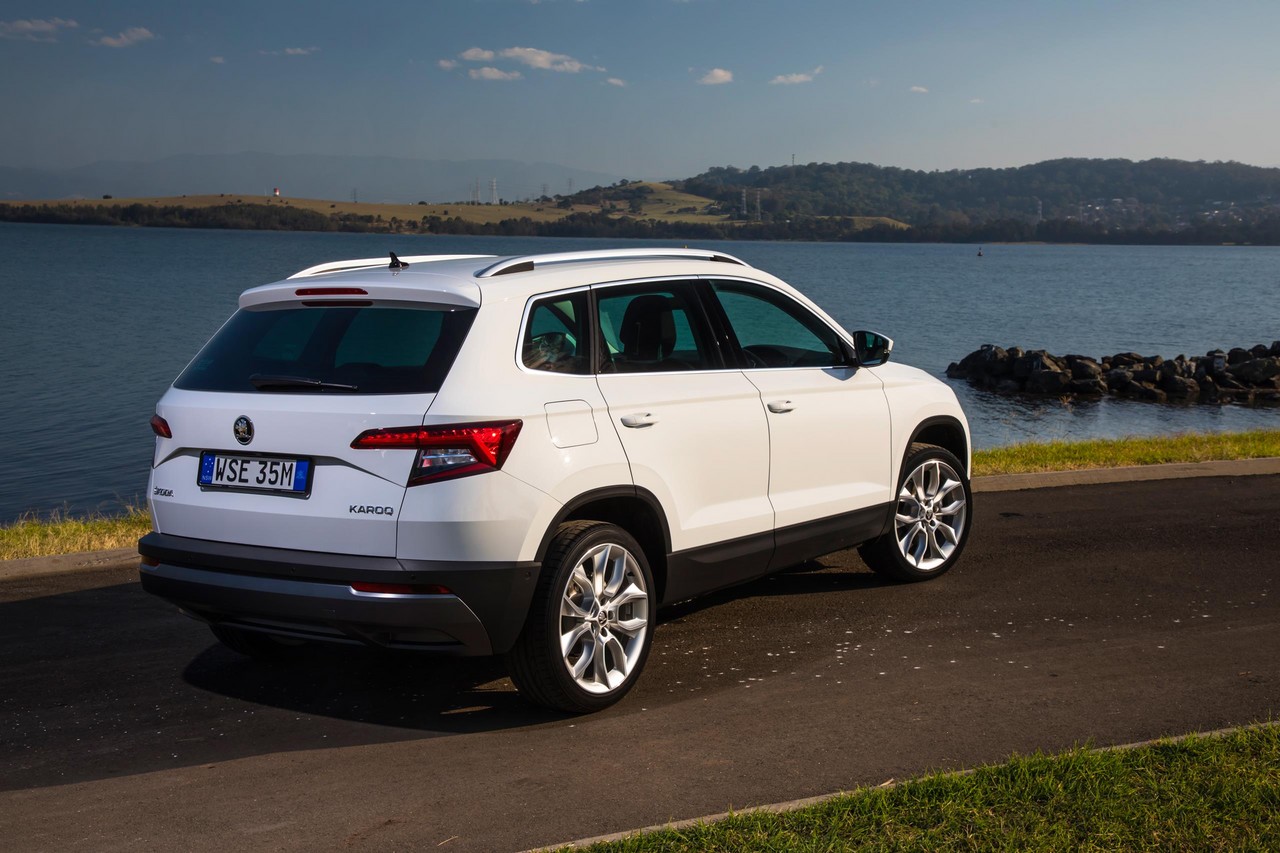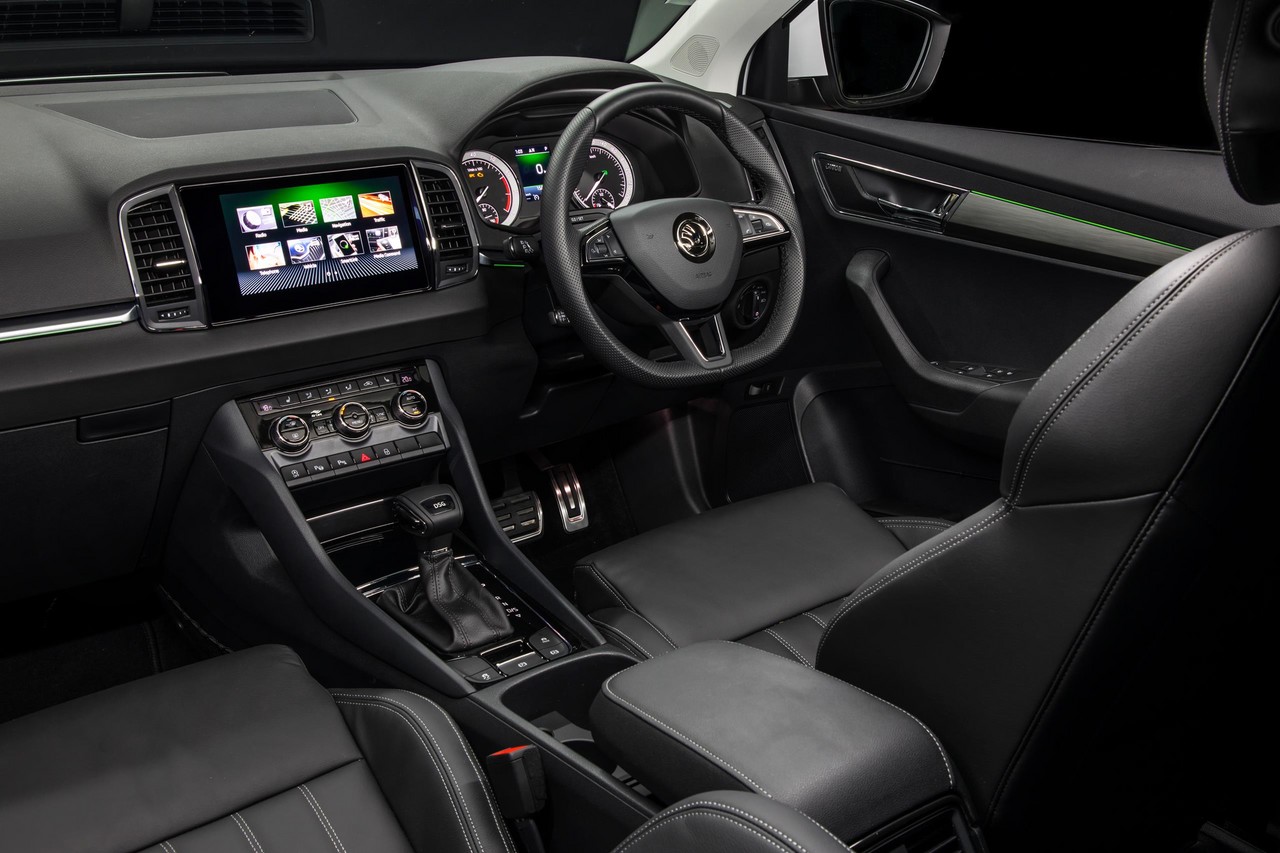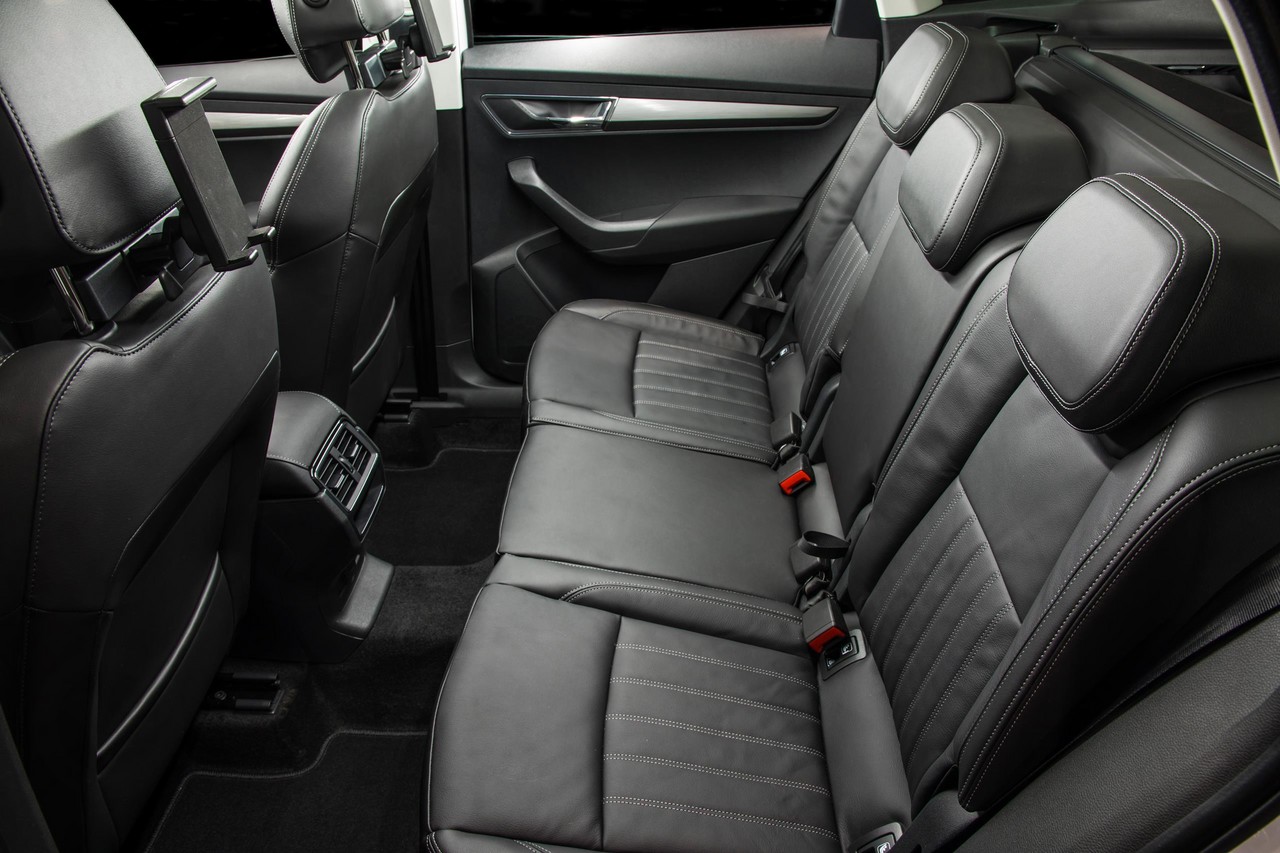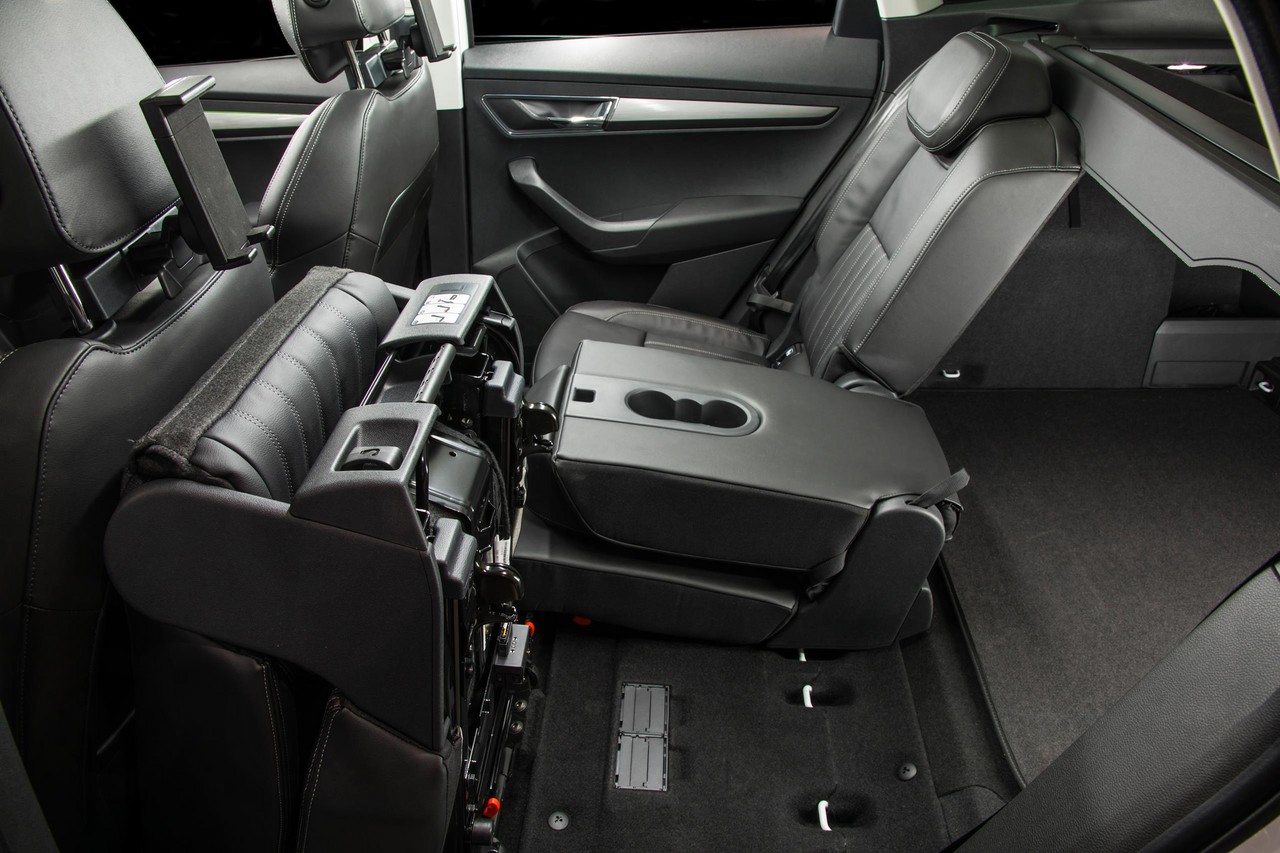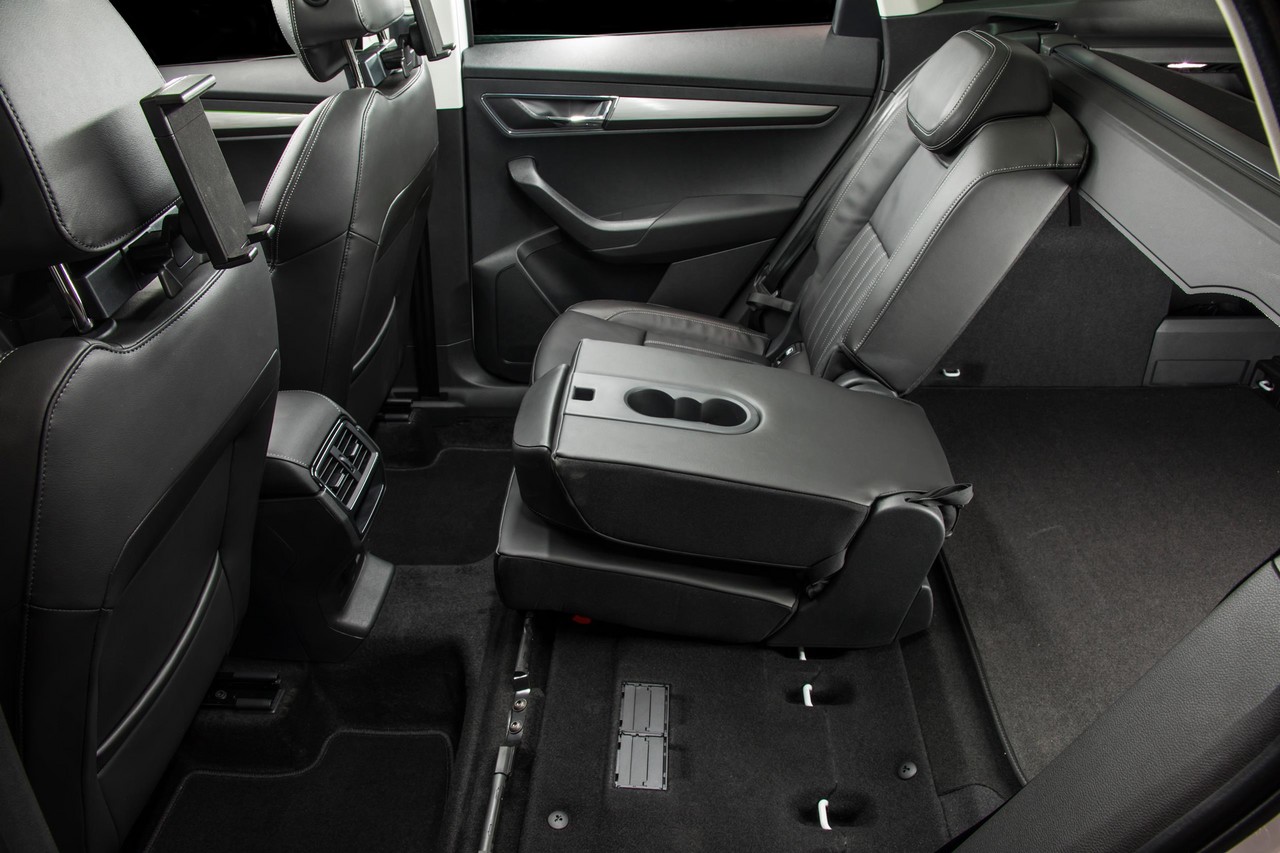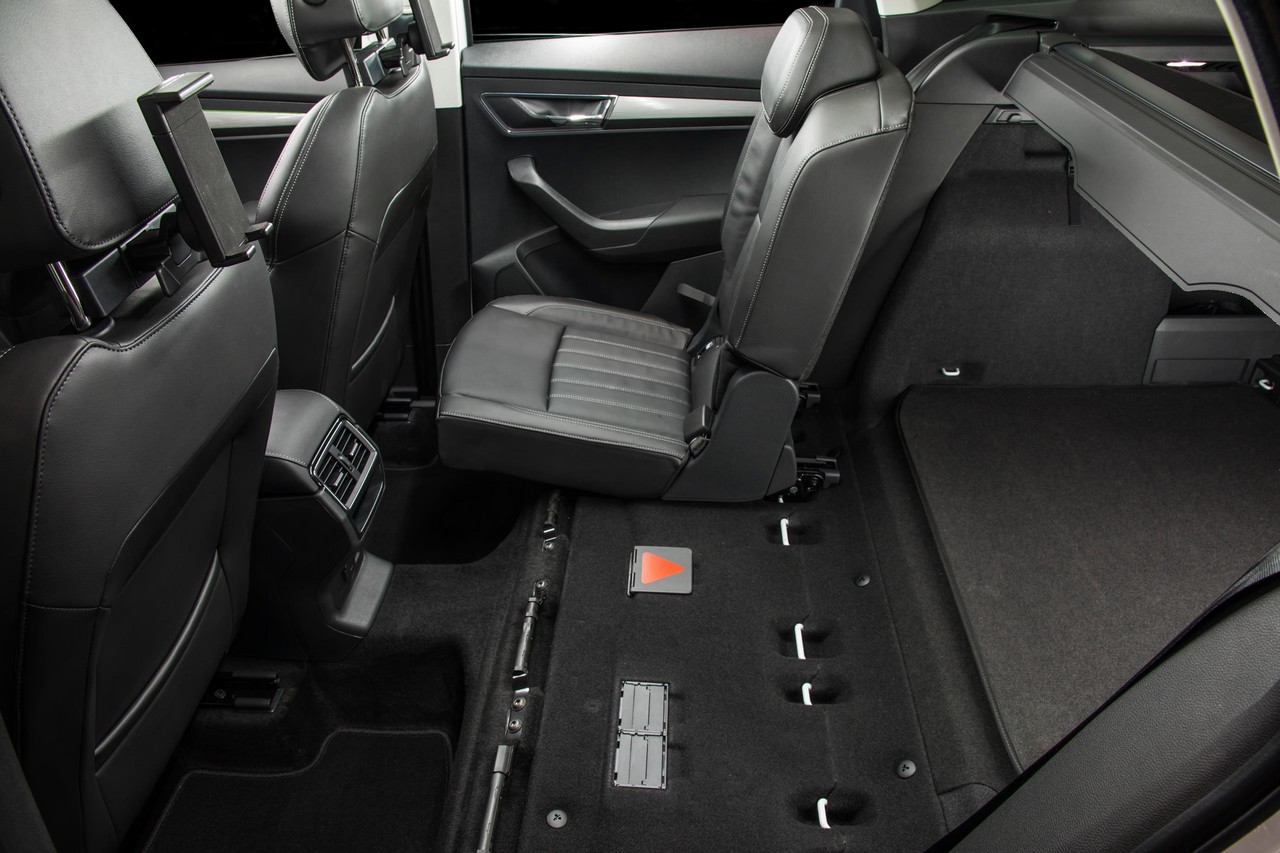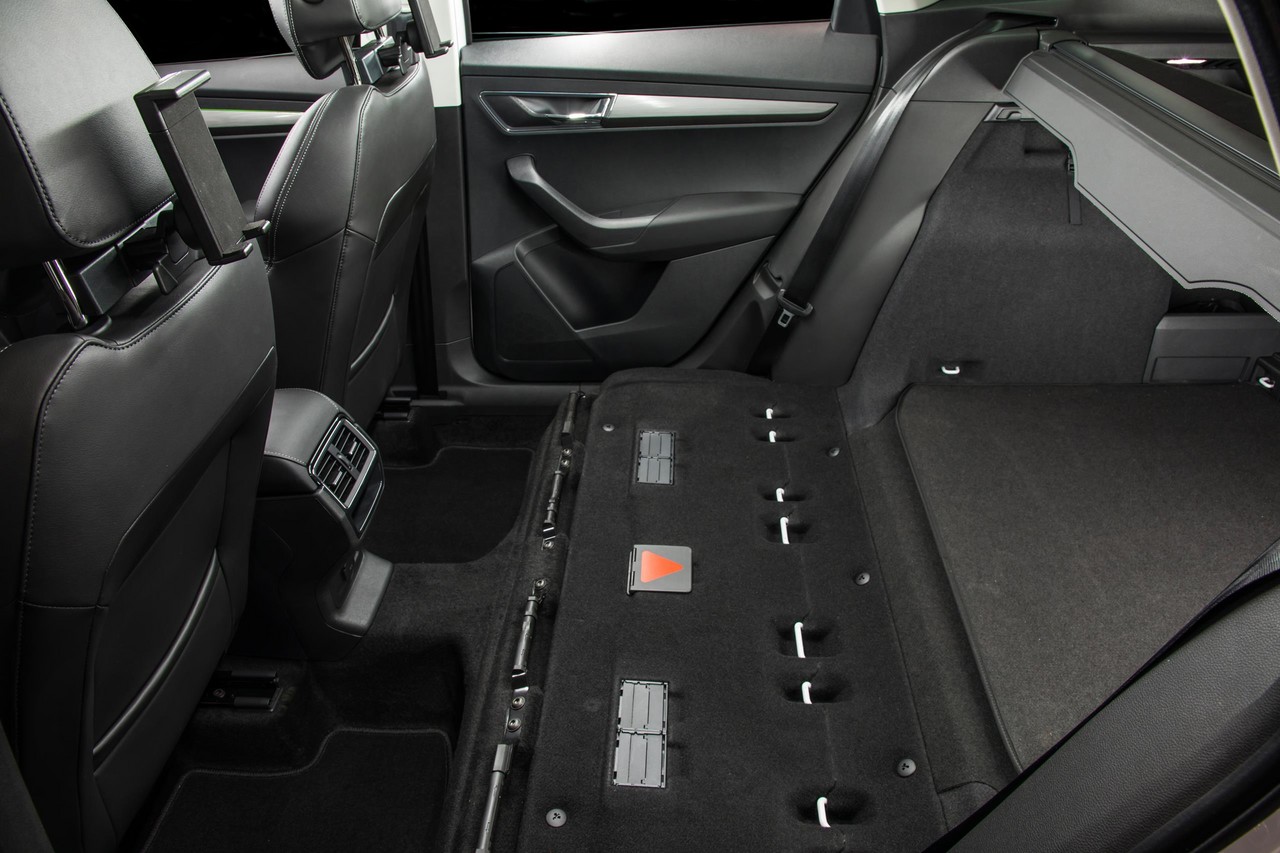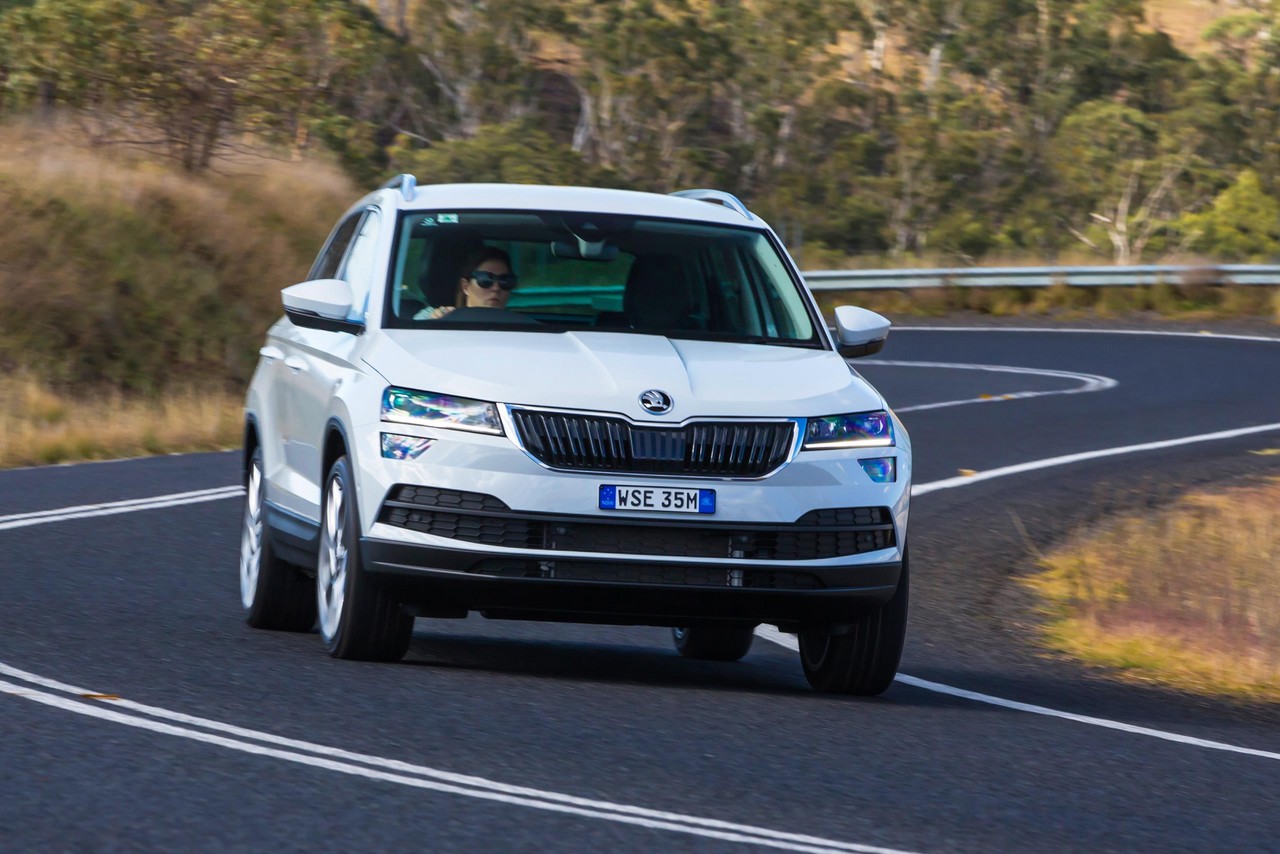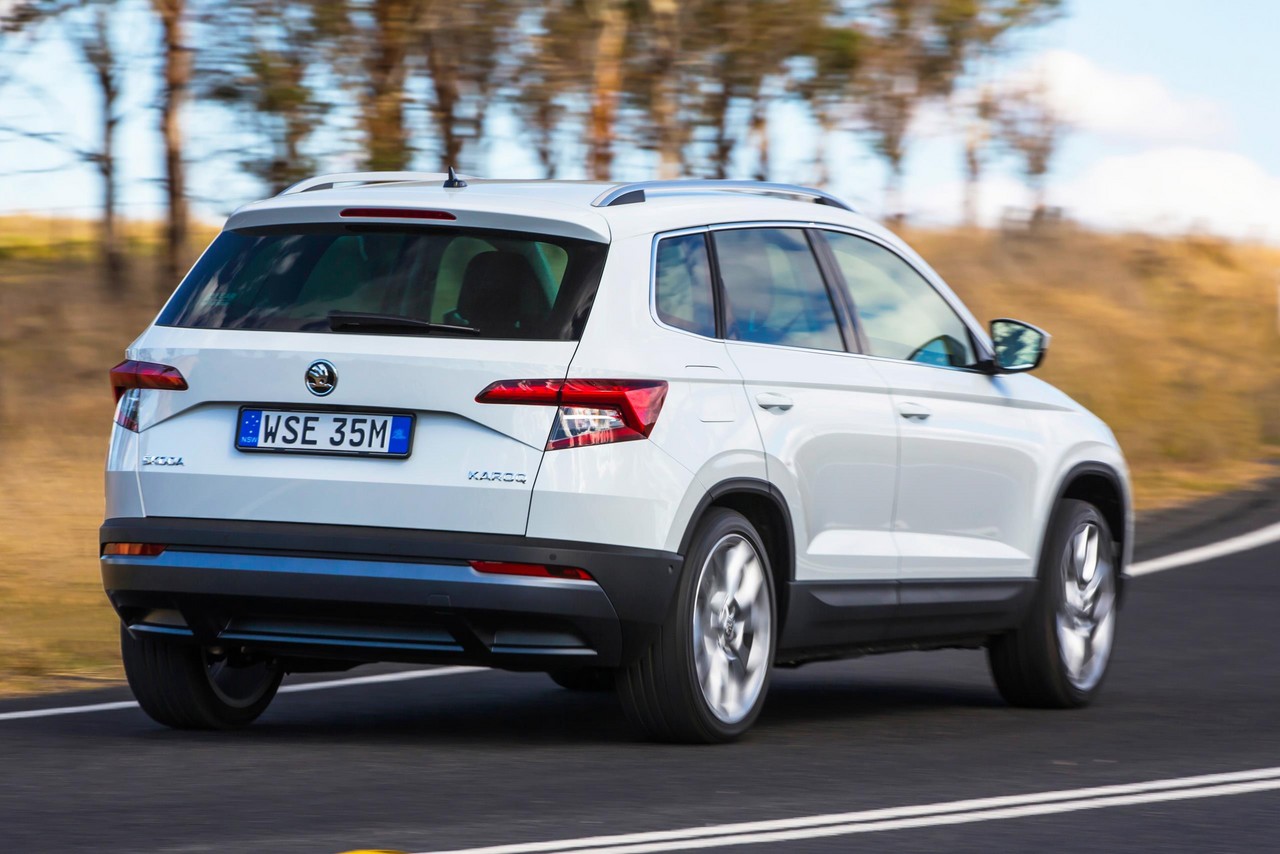
- Refined and willing 1.5 TSI petrol engine
- Impressive ride quality on 17-inch wheels (and 215/55 R17 tyres)
- Steering is accurate and well-weighted
- Sliding and removable ‘VarioFlex’ rear seats
- Well-insulated cabin and soft-touch materials
- Relatively low window line means children can see out the windows
- Safety technologies in $1700 ‘Travel Pack’ should be standard
- 43 mm shorter wheelbase than closely related VW AD1 Tiguan
- Narrow central rear seat
- Abrupt engagement of DSG when accelerating from rest
- Notchy shift action for manual transmission
- High ride height contributes to body roll when cornering
Overview
Released in Australia in June 2018, the Skoda Karoq was a five-seat SUV. Manufactured in Kvasiny, Czech Republic, since July 2017, the Skoda NU Karoq range for Australia initially consisted of front-wheel drive 1.5 TSI ACT variants that were offered with six-speed manual or seven-speed double clutch transmissions. All-wheel drive models are expected to be offered in Australia from 2019.
The 1.5 TSI ACT engine had a start-stop function that enabled it to shut down when the vehicle was stationary and ‘Active Cylinder Technology’ which could shut down two of the engine’s cylinders (#2 and #3) at engine speeds from 1400-4000 rpm and at speeds up to 130 km/h.
The ‘Karoq’ name and its spelling originate from the language of the Alutiiq, an indigenous tribe who reside on an island off the southern coast of Alaska. Specifically, ‘Karoq’ is a combination of the words ‘kaa’raq’ (car) and ‘ruq’ (arrow). Within Skoda’s model range, the Karoq effectively replaced the Skoda 5L Yeti .
| Variant | Engine | Trans. | Peak power | Peak torque |
|---|---|---|---|---|
| 110 TSI ACT | 1498 cc turbo petrol I4 | 6sp man., 7sp DCT |
110 kW at 5000-6000 rpm | 250 Nm at 1500-3500 rpm |
All-wheel drive system
From 2019, the Skoda Karoq is expected to be available with a fifth-generation Haldex all-wheel drive system which consists of an electronically controlled and hydraulically actuated multi-plate clutch that is located in front of the rear axle differential (at the end of the prop shaft).
Under low loads or when coasting, the rear axle can be decoupled to minimise fuel consumption such that the Skoda Karoq is front-wheel drive only. If there is a loss of front-wheel traction, or such a loss is anticipated by on-board sensors, the clutch can engage to force the plates together and transfer torque to the rear axle ‘in just a few milliseconds’ for a 50:50 front:rear torque split.
The all-wheel drive system also has selectable ‘Snow’ and ‘Off-road’ modes.
Body and dimensions
The Skoda Karoq was underpinned by Volkswagen AG’s MQB platform which was shared with the Volkswagen AD1 Tiguan and Volkswagen T-Roc . Compared to the Volkswagen AD1 Tiguan , however, the Skoda Karoq was 104 mm shorter (at 4382 mm), 2 mm wider (1841 mm), 45 mm lower (1603 mm) and had a 43 mm shorter wheelbase (2638 mm for front wheel drive models, though all-wheel drive models have a 2630 mm long wheelbase). Drag co-efficients for the Skoda Karoq ranged from 0.335 Cd to 0.361 Cd depending on drivetrain.
Fitted as standard for Australia, each of the three ‘VarioFlex’ rear seats could slide forward, be removed or, if only the centre rear seat was removed, the outer rear seats could slide inwards (on rails) to provide greater shoulder room for the rear occupants. Due to its VarioFlex rear seats, the Skoda Karoq had luggage space of:
- 479 litres with the rear seats in their normal position;
- 588 litres with the rear seats pushed forward;
- 1605 litres with the rear seats folded flat; and,
- 1810 litres when all three rear seats were removed.
Suspension
The Skoda Karoq had MacPherson strut front suspension with lower triangular links and an anti-roll bar. While the standard rear suspension for the Karoq is a compound link crank-axle, all-wheel drive Karoq 2.0 TDI models (not available in Australia) have four-link rear suspension (one longitudinal link and three transverse links) and an anti-roll bar.
Steering
The Skoda Karoq had rack and pinion steering with electric power assistance; its turning circle was 10.2 metres.
Safety equipment
Standard safety equipment for the Skoda Karoq included dual front airbags, a driver’s knee airbag, front seat-mounted side airbags, full-length curtain airbags, ABS, electronic brake force distribution, brake assist, electronic stability control, traction control and front seatbelts with pre-tensioners and load limiters.
As standard, Australian-delivered Skoda Karoq models were equipped with the following active safety technologies as standard –
- Front Assist: operating at speeds above 30 km/h, Front Assist used a radar sensor to detect if the Skoda Karoq was closing too fast on the vehicle ahead. If this occurred, Front Assist would 1) provide audible and visual warnings to the driver; 2) bring the brake pads into contact with the brake discs in preparation for an emergency stop; and, 3) provide a jolting brake application to alert the driver. If the driver failed to respond, Front Assist would apply the brakes autonomously to avoid or reduce the severity a collision;
- City Emergency Brake: operating at speeds below 30 km/h, City Emergency Brake used a radar sensor and front camera to monitor the area ahead for vehicles and pedestrians. If a collision was anticipated, the driver would be alerted via visual and audible warnings, followed by jolting brake application. If the driver failed to respond, the system would initiate emergency braking;
- Adaptive Cruise Control (ACC): when cruise control was engaged at speeds between 30 km/h and 160 km/h, ACC used a radar sensor to maintain a safe distance from the vehicle in front, controlling engine speed and applying the brakes as necessary. When the road ahead was clear, ACC could also cause the vehicle to accelerate up to its cruising speed;
- Passenger Protect Assist: operating at speeds above 30 km/h, Passenger Protect Assist could detect when an emergency manoeuvre was being performed and used the electric front seatbelt pre-tensioners to remove slack from the seatbelts. In cases where high lateral accelerations were detected, Passenger Protect Assist would also the side windows and sunroof (where fitted) to prevent objects coming into the passenger compartment in the event of a collision;
- Multi-Collision Brake: activated when two independent sensors detected that a collision had occurred and that the driver was not responding. In these circumstances, the brakes would be applied to achieve controlled deceleration to a speed of 10 km/h to minimise the risk and potential severity of secondary collisions; and,
- Driver Alert: monitored driver behavior at speeds in excess of 65 km/h for signs of fatigue. If detected, a tone would sound and a warning would appear in the multi-function display.
Available as an extra-cost option ($1700), the Travel Pack included the following safety technologies –
- Lane Assist: operated at speeds over 65 km/h and used a camera positioned in the base of the rear-view mirror to detect lane markings. If the driver was assessed to have unintentionally departed from the lane, the system would automatically initiate corrective steering. If no steering action was detected from the driver, a warning signal would sound and the message ‘Lane Assist – please take over steering’ would appears on the multi-function display;
- Side Assist – Blind Spot Detection: active at speeds over 10 km/h, Side Assist used two radar systems in the lower part of the rear bumper to monitor the area beside and up to 20 metres behind the Skoda Karoq. When the system detected a vehicle in the driver’s blind spot or approaching from behind, an LED symbol would illuminate in the door mirror to alert the driver. If the driver indicated to change lanes in the direction of the detected vehicle, the LED would flash to alert the driver; and,
- Rear Traffic Alert: when reversing out of parking bays, Rear Traffic Alert could detect vehicles approaching laterally that may cross the Karoq’s projected path. If detected, an acoustic signal would warn of a possible collision, while the side from which the vehicle was approaching would be shown on the infotainment display (initially in yellow and then in red). If necessary, the brakes could be automatically applied to prevent the driver from continuing to reverse out of the parking bay.
The Travel Pack also included a power adjustable driver’s seat with memory function, heated front seats and foldable door mirrors with down lighting, auto-dimming and memory functions.
Euro NCAP testing
In Euro NCAP testing , the Skoda Karoq received a five star safety rating which included a 93 per cent adult occupant protection rating and a 79 per cent child occupant rating. In the frontal offset test, occupant protection was generally rated as good, though chest protection for the front occupants was rated as adequate (i.e. a slight risk of serious injury). While maximum points were awarded in the side impact test, chest protection in the more severe pole test was rated as adequate.
Brakes
The Skoda Karoq 1.5 TSI ACT had 312 mm by 25 mm ventilated front brake discs and 272 mm by 10 mm solid rear discs.
Features: Skoda Karoq 1.5 TSI ACT
As standard, the Skoda Karoq was equipped with a ‘Bolero’ infotainment system which included an eight-inch touchscreen, an eight speaker sound system, Bluetooth mobile phone connectivity (including voice control and audio streaming), a USB input, 3.5 mm auxiliary input, SD card slot and smartphone integration via Apple CarPlay and Android Auto.
Beyond this, standard features for the Skoda Karoq included 17 x 7.0J alloy wheels with 215/55 R17 tyres, ‘Climatronic’ dual-zone climate control air conditioning, front fog lights, LED daytime running lights, dusk-sensing headlights, rain-sensing wipers, a rear view camera, rear parking sensors, VarioFlex rear seats, a leather-wrapped steering wheel with audio controls, Advanced Keyless Entry including Smart Start (KESSY), power adjustable and heated mirrors, power windows, a height and reach adjustable steering wheel, height adjustable front seats, an electric park brake, LED interior lighting, a 12 volt power outlet in the centre console, privacy glass, silver roof rails, low tyre pressure indicator, a trip computer and an alarm with interior monitoring.
Optional features for the Skoda Karoq included 19-inch alloy wheels, a panoramic sunroof and metallic/pearl effect paint.
Premium Pack
Available as an extra-cost option ($3600), the ‘Premium Pack’ included 18-inch alloy wheels, leather-appointed upholstery, full LED headlights with adaptive lighting, LED daytime running lights, front parking sensors, steel pedals and a power-operated tailgate (height programmable).
Tech Pack
Available as an extra-cost option ($3200), the ‘Tech Pack’ included a ‘Columbus’ satellite navigation system which had a 9.2-inch display and ten years of map updates, a premium sound system with ten speakers, digital radio tuner (DAB+), wireless mobile device charging, Drive Mode Select, key-based personalisation settings, a power-operated tailgate with hands-free opening and closing, and ‘Park Assist 3.0’ (automated steering for parallel, parallel exit, reverse and forward perpendicular parking manoeuvres).
Specifications
Related links
